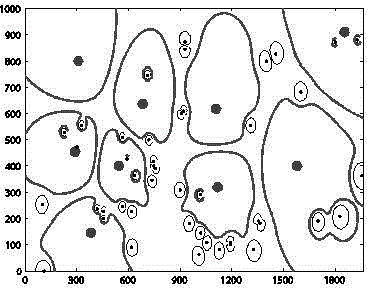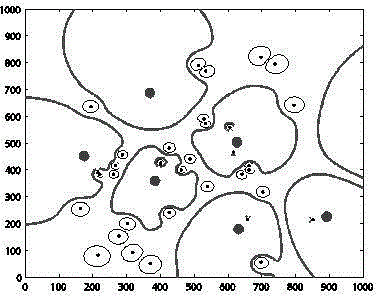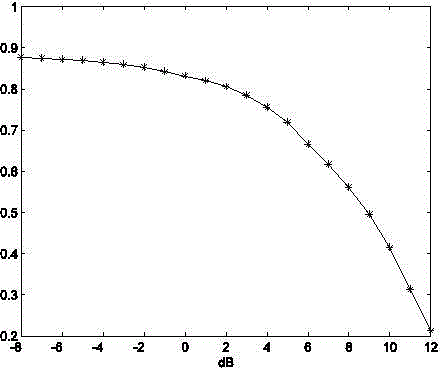Method for detecting and evaluating coverage rate and capacity of wireless base station cell
A wireless base station and capacity detection technology, applied in wireless communication, electrical components, etc., can solve problems such as time-consuming, labor-intensive and efficient, and achieve the effect of saving manpower and material resources, saving construction costs, and optimizing network networking
- Summary
- Abstract
- Description
- Claims
- Application Information
AI Technical Summary
Problems solved by technology
Method used
Image
Examples
Embodiment Construction
[0016] After determining the distribution coordinates and transmission power of wireless base stations in the detection and evaluation area, use computer software simulation to intuitively simulate the coverage of cell base stations based on a given signal-to-interference ratio threshold or signal-to-interference-to-noise ratio threshold, and a large number of virtual user points are evenly distributed in the base station coverage. area, calculate the signal-to-interference ratio SIR or signal-to-interference-noise ratio SINR of each user, and compare it with the signal-to-interference ratio threshold or the signal-to-interference-noise ratio threshold, if it is greater than or equal to the threshold, add one to the counter, and poll all users in turn, then The final actual cell coverage rate is the percentage of the final value of the counter and the virtual total number of users, and the cell capacity is calculated using the previously calculated SIR value or SINR value and th...
PUM
 Login to View More
Login to View More Abstract
Description
Claims
Application Information
 Login to View More
Login to View More - R&D
- Intellectual Property
- Life Sciences
- Materials
- Tech Scout
- Unparalleled Data Quality
- Higher Quality Content
- 60% Fewer Hallucinations
Browse by: Latest US Patents, China's latest patents, Technical Efficacy Thesaurus, Application Domain, Technology Topic, Popular Technical Reports.
© 2025 PatSnap. All rights reserved.Legal|Privacy policy|Modern Slavery Act Transparency Statement|Sitemap|About US| Contact US: help@patsnap.com



